I adapted this recipe for Stewed Pork with Creamed Hominy and Salsa Verde from Prune a cookbook by Gabrielle Hamilton featuring recipes from her now-classic NYC restaurant. I’m glad I did too, but I’ll admit there were quite a few obstacles along the way. Before I say anything else let me start with the fact that this is a great book. However, as inspiring and delicious as the book may be, it’s also quite ambitious with a no-nonsense vibe. Gluten-free, vegan, Paleo – well any picky eaters – should look elsewhere. There’s no pandering or alternative suggestions in this book.
But that’s not where my problem lies.
I’ve had the book for some time now, but I have to admit that at first, it intimidated me somewhat. Not because the recipes seem particularly difficult. Braising. Pan Frying. Roasting. These are the kind of comforting “real food” recipes that typically interest me the most. Nope. It’s not the techniques in this book that scared me off – it’s the way they’re described. The book is practically written in code. There are suggestions for how many days to carry over my mise (I know what a mise is, but I’ve never carried one over). The book goes into great detail about how many steaks I can expect to carve out of a #109. Hamilton is particularly strict about her preferences for brands and vendors that I don’t have access to. It’s chock-full of other insider references that seem to scream “if you don’t know what I’m talking about stay out of the kitchen you idiot!”
I’m exaggerating (sorta) but there are references in this book that had me scratching my head and running to the internet for translations.
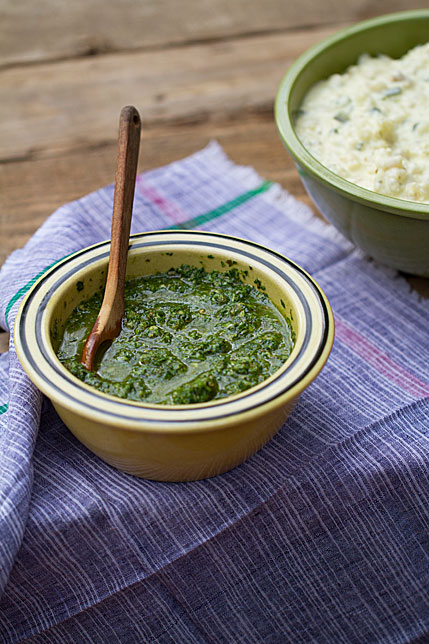
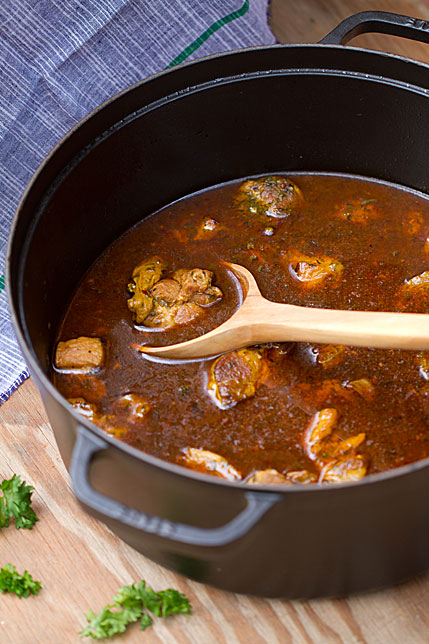
Stewed Pork with Creamed Hominy and Salsa Verde
When I first opened this book the recipe for Stewed Pork with Creamed Hominy and Salsa Verde begged for my attention. Spicy, rich, and featuring hominy, an under-appreciated ingredient that I’m always eyeing in my local Latin market. However, the recipe called for a “10 can” of hominy (no, not a tin can). I just assumed I was looking at a typo. She must mean a 10-ounce can. So I looked closer at the recipe. Could she really mean 10 ounces of hominy and 1 quart of heavy cream (with 1/2 pound of butter too)? What was I missing?
Well, I was missing the arcane fact that a “10 can” is 6 pounds of hominy! A “10 can” is the size of an old-fashioned coffee can. There’s no glossary in this book and there’s no index. I had to figure this all out from sources outside the book.
Still, Stewed Pork with Creamed Hominy and Salsa Verde. I just had to make it. So I pushed past terms like “robot coup” (which I found out is a food processor) and I ignored the fact that even in Los Angeles it’s hard to find sweetbreads and “10 cans” and just started reading everything I could from this book. The more I read the more I learned about cooking. Sure there is an awful lot of annoyingly unfamiliar terminology. But just like Chemistry 101 or the sonnets of Shakespeare, once I learned just what the hell she’s talking about I began to see that this book went into a lot of wonky detail. The kind of detail that really interests me (once I know how to read it). My guess is you’ll be seeing more recipes I’ve adapted from this book. And I do mean adapted. I wouldn’t want to confuse you and your morning prep crew too much. GREG
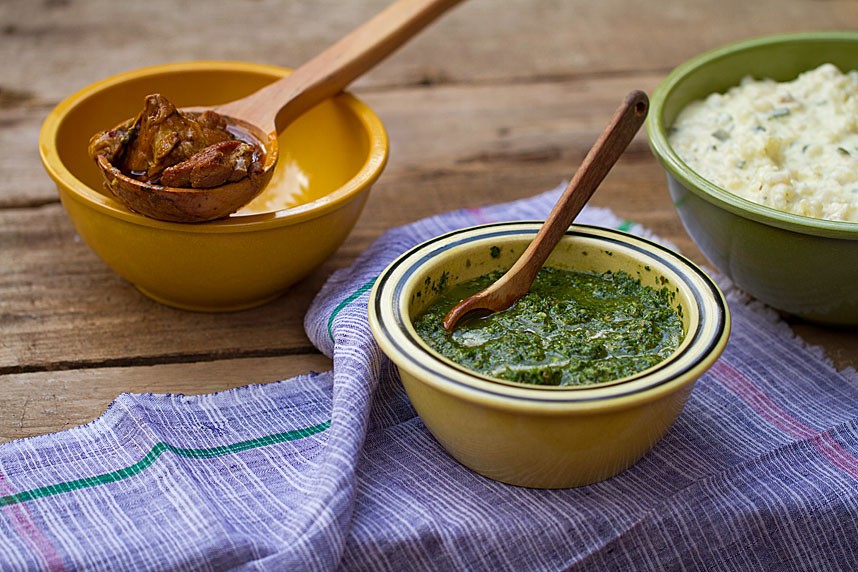
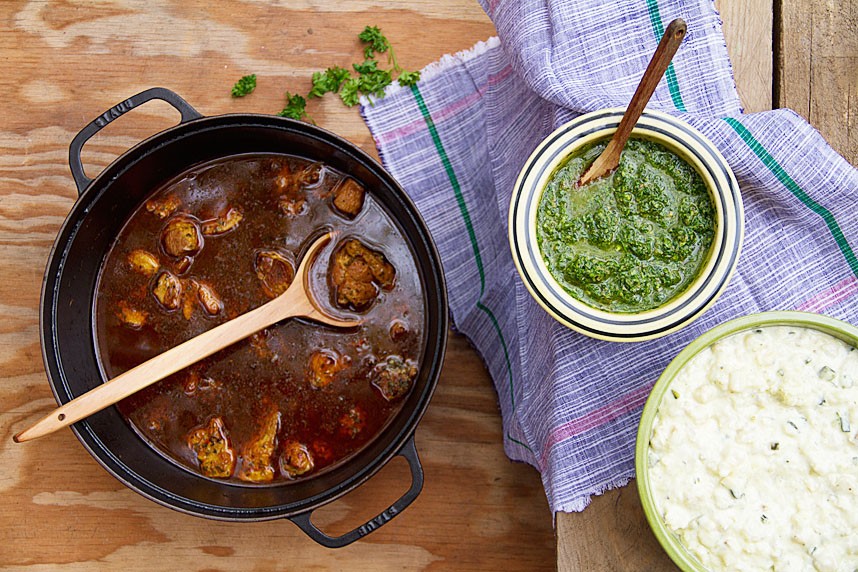
Start stewed pork the day before you plan to serve it. It is better once it cools and is reheated.

Ingredients
- 2 cup lightly packed cilantro (leaves and some stems)
- 4 whole green onions (chopped)
- 3 clove garlic (peeled and chopped)
- 2 pound boneless pork butt (cut into 2 ½‑inch chunks)
- salt and pepper (as needed)
- 2 tablespoon olive oil (plus more as needed)
- 4–6 tablespoon chili paste (or to taste)
- 3 cup chicken stock
- 2 cup beef stock
- Creamed Hominy (see recipe below)
- Salsa Verde (see recipe below)
Directions
In the bowl of a food processor fitted with the metal blade pulse cilantro, green onions, and garlic, scraping down sides as needed, until a fine paste is achieved. It should be consistent in texture but not quite a puree. Set aside.
In a large bowl season the pork chunks generously with salt and pepper. Set aside.
Heat oil in a large cast iron or other heavy-bottomed Dutch oven style pot over medium-high heat. Once the oil is almost smoking, add several pork chunks and brown them well on all sides. Work in batches, adding more oil as needed, moving the browned pork to a lined tray as you work, do not crowd the pot.
When all the meat is well-browned return it and any accumulated juices to the pot. Add cilantro paste and stir, scraping the bottom as you work until the cilantro paste is fragrant, about 1 minute. Add chili paste and cook, stirring constantly, 1 more minute. Add both stocks to barely cover the meat. You might not use it all. Bring to a gentle boil, then lower the heat to a simmer. Cover and cook about 90 minutes. The meat should be very tender, but the chunks should still hold their shape.
Bring the stewed pork to room temperature, then chill it overnight in the refrigerator. The next day peel off the thick layer of fat and gently reheat before serving.
To serve scoop a good spoonful of warm hominy into shallow bowls. Use the back of the spoon to create a well. Fill the well with a few chunks of stewed pork, letting the juices spill over the sides of the hominy (see recipe link in the introduction). Finish with a liberal drizzle of salsa verde (see recipe link in introduction).
The creamed hominy may be made several hours ahead and very gently reheated before serving. You may need to add a splash of milk to get the mixture moving during reheating.
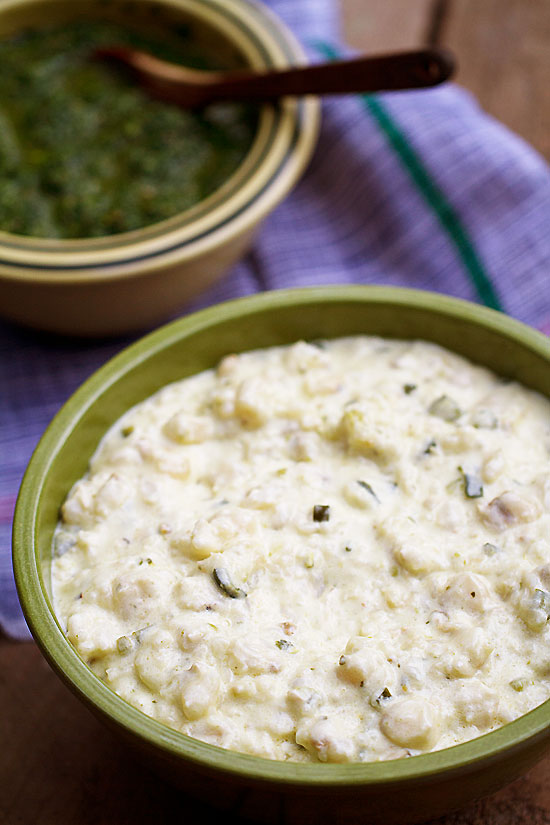
Ingredients
- 8 tablespoon unsalted butter
- 1 fresh poblano pepper (stemmed, seeded and small diced)
- kosher salt (as needed)
- 2 (15 oz) cans white hominy (drained and rinsed)
- 2 cup heavy cream (plus more if needed)
Directions
Melt butter in a medium, slope-sided pan set over low heat. Add diced poblano peppers, season lightly with salt then cook, stirring often, until softened about 8 minutes. Add hominy and cream. Continue to cook uncovered, stirring often until thickened; about 30 minutes. Just before serving ladle half of the hominy mixture into a serving bowl. Use an immersion blender to blend the mixture into a coarse mash. Add the remaining un-mashed hominy to the serving bowl. Stir well to incorporate. Adjust concistency with a little more cream if necessary. Season with salt as needed. Serve warm.
The optional lemon juice makes the sauce zestier, but add it just before serving, as the acid will cause the herbs to discolor.
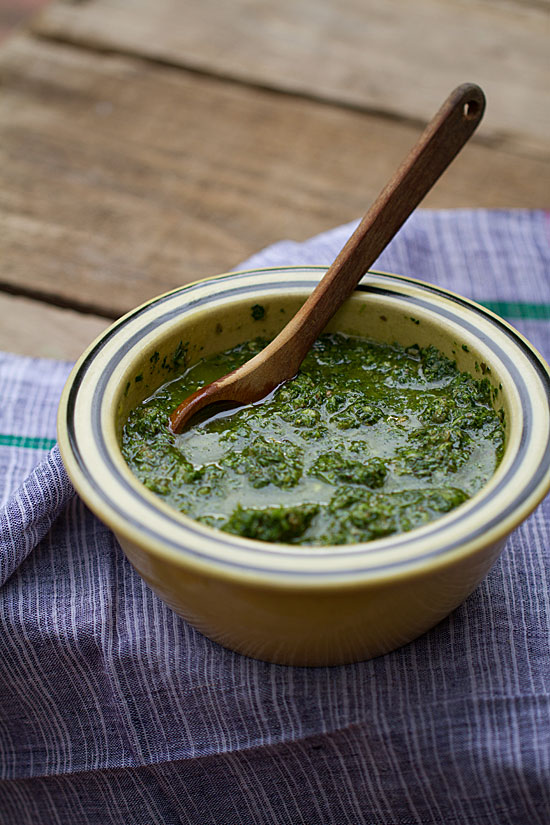
Ingredients
- 2 cup lightly packed fresh flat-leaf parsley
- ½ cup lightly packed fresh mint leaves
- ¼ cup lightly packed fresh tarragon leaves
- 2–3 anchovy fillets
- 2 clove garlic (peeled and minced)
- 1 tablespoon chopped capers (rinsed and dried)
- ½ teaspoon kosher salt (or to taste)
- freshly ground black pepper (to taste)
- ½ cup extra-virgin olive oil (or to taste)
- 1 tablespoon freshly squeezed lemon juice (optional)
Directions
In the bowl of a food processor fitted with the metal blade, combine parsley, mint, tarragon, anchovies, garlic, capers, about ½ teaspoon salt and a generous grinding of pepper. Pulse briefly to combine. With the motor running, drizzle in about ½ cup olive oil. Process until you achieve the desired consistency. You may use more or less oil to your own taste. Scrape the sauce into a bowl and cover tightly with plastic wrap. Stir in lemon juice just before serving if using.
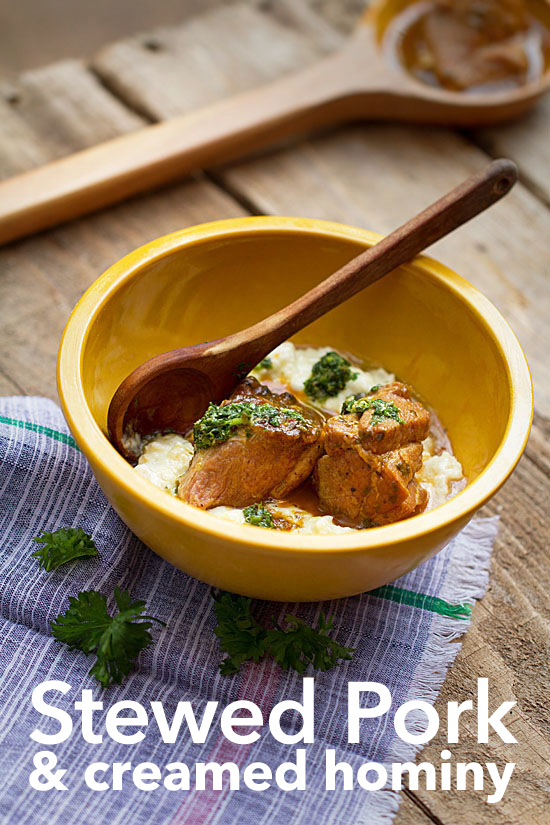







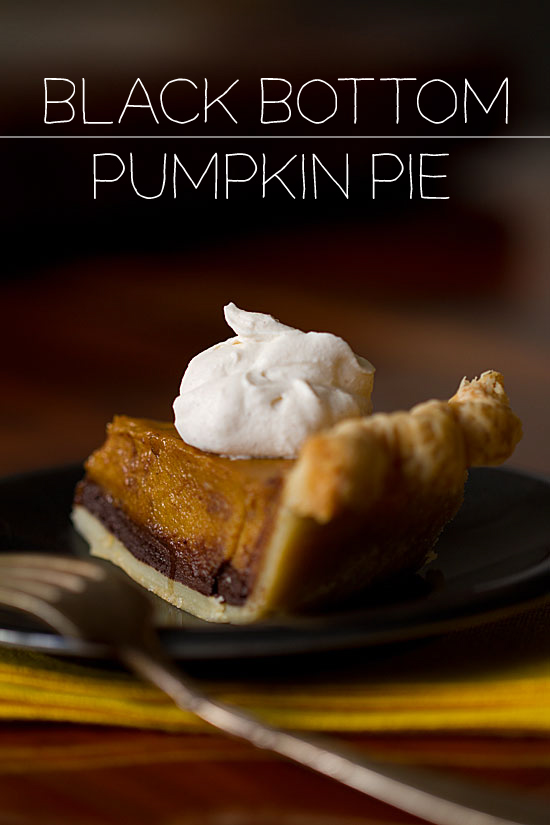

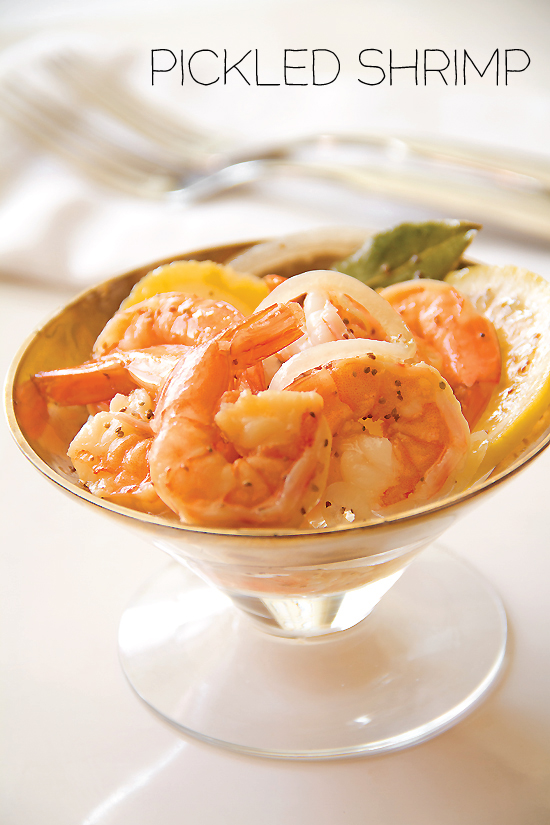
Greg, I knew what the #10 can was because I grew up with a mother who cooked in massive quantities. I, on the other hand, much prefer the smaller cans you used in your scaled down version. This sounds really tasty, and this is the first time I’ve even considered hominy!
The next time I’m in the mountains I’m going to make this and my guy will be forever happy. The salsa verde looks real good.
I had the same reaction to this cookbook as you did. Unfortunately for me, I couldn’t find any motivation to cook from it. You have piqued my interest with this recipe and look forward to any of your other user friendly renditions from Prune.
Well, I am sure glad I have you to think for me! This does sound and look fabulous! Totally rich and the components are awesome. The salsa verde with capers and anchovies sounds like i could slurp it with a spoon! Might have to start with that!
The chef wrote the book using kitchen terms found in professional kitchens, such as #10 can and Robot Coup. I’m surprised the editor didn’t include a translation for the home cook! Let me know if you need any more help with the terminology. 🙂
Maybe she wanted to create a deliberate degree of distance between her and her audience. Or maybe she had a falling out with her editor!
Oddly enough, my grandma used to refer to cans with size numbers. I don’t know if that was some penchant of hers or something old-fashioned.
I’m of two minds on this. On the one hand I don’t like the implied “f*** you if you don’t get it” message that the author is sending. On the other hand, it’s refreshing to see a book that refuses to do any hand holding. Thanks for translating for us plebs, and happy new year!
I know what mise-en-scene means in terms of film, however I wasn’t aware it was a kitchen term as well. However, that has piqued my curiosity in regard to this book. The recipes you chose look delicious!
It sounds really great, Greg. I know what you mean about the “10 can” issue. I am just so glad we have the internet to do our research. 20 years ago I would have closed the book and never turned back! Oddly, I am most excited about the creamy hominy. Ooh-wee that sounds good.